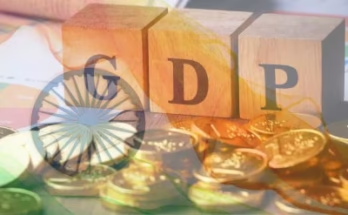The U.S. liquefied natural gas (LNG) sector — a key player in the global energy supply chain — is facing turbulence as two of its largest export plants reported significant declines in natural gas demand this month.
The unexpected drop has raised questions about energy consumption patterns, global demand shifts, and geopolitical factors affecting natural gas flows. For a country that has positioned itself as a top LNG exporter, the decline signals potential headwinds for both domestic producers and international buyers.
The Numbers Behind the Drop
According to industry trackers:
-
Gas demand at two leading LNG plants in the U.S. Gulf Coast fell by nearly 25% compared to July 2025.
-
Combined, these plants account for nearly 20% of America’s LNG export capacity.
-
Exports to Europe and Asia saw a sharp decline, particularly due to softer demand from China and Europe’s increased reliance on renewable energy during summer.
Why It Matters
-
Global Market Dependence
The U.S. is now the world’s largest LNG exporter, supplying energy to Europe after Russia’s war in Ukraine disrupted gas flows. Any slowdown in U.S. exports could destabilize energy security abroad. -
Economic Implications
Lower gas demand at plants means reduced income for operators, and potentially weaker prices for U.S. gas producers. -
Geopolitical Dimension
Energy has become a central tool in global politics. U.S. LNG exports have been a strategic counterbalance to Russian gas in Europe. A slowdown could embolden Moscow’s influence.
Factors Driving the Decline
-
Europe’s Mild Summer: Reduced energy needs have led to slower gas imports.
-
China’s Sluggish Economy: With industrial output weaker than expected, LNG imports have dipped.
-
Rising Renewable Usage: Wind and solar generation surged in Europe, reducing immediate gas reliance.
-
Maintenance Schedules: Planned maintenance at U.S. LNG facilities also temporarily lowered output.
Industry & Market Reaction
-
Natural Gas Prices: U.S. benchmark gas futures dipped nearly 3% on the news.
-
European Energy Firms: Reassured by record-high gas storage levels ahead of winter, they remain calm.
-
Asian Importers: Some buyers see this as an opportunity to renegotiate long-term LNG contracts at better terms.
“This may be a temporary slowdown, but it highlights how quickly the global LNG market can shift due to demand and weather factors,” said Emily Carter, senior analyst at Global Energy Watch.
What’s Next for US LNG?
Analysts believe the dip could be short-lived, but warn of structural risks:
-
Winter Demand Spike: Energy needs in Europe and Asia will likely surge again in late 2025.
-
New LNG Capacity: Additional U.S. plants under construction may intensify competition in the next 2–3 years.
-
Policy Challenges: Environmental groups are pressuring Washington to limit new LNG expansions, citing climate impacts.
Global Ripple Effects
-
Europe: Likely to remain stable in the short term, thanks to high storage and renewable output.
-
Asia: Importers like Japan and South Korea may still increase LNG demand this winter.
-
Developing Nations: Price fluctuations could affect LNG affordability in countries like Pakistan and Bangladesh.
Conclusion
The sudden drop in gas demand at U.S. LNG plants is a reminder of the fragile balance in global energy markets. While the decline may prove temporary, it underscores the importance of diversification, renewable adoption, and careful geopolitical management in ensuring stable energy flows.
For now, the world will be watching closely as the U.S. navigates its role as an energy superpower facing shifting dynamics in demand and supply.
FAQs
Q1: Why did US LNG plants see a decline in demand?
Due to weaker imports from Europe and Asia, rising renewable usage, and scheduled maintenance.
Q2: Will LNG exports pick up again?
Most likely during the winter season, when heating demand spikes in Europe and Asia.
Q3: How does this affect global markets?
It temporarily eases natural gas prices but raises uncertainty about long-term supply security.
Q4: Is this linked to geopolitics?
Yes. U.S. LNG is a major counterweight to Russian gas in Europe, so fluctuations carry political weight.


